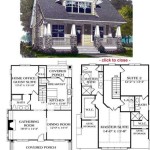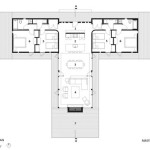House Floor Plan With Dimensions In Mm
A house floor plan with dimensions in millimeters (mm) is a detailed diagram that illustrates the layout of a residence, specifying the precise size and location of each room, wall, door, window, and other structural features. The use of millimeters offers a high degree of accuracy, particularly crucial for construction, renovation, and interior design projects. This level of detail is essential for architects, builders, designers, and homeowners seeking to visualize and execute their vision with precision.
Understanding and interpreting a floor plan measured in millimeters requires familiarity with architectural conventions, including scale, symbols, and dimensioning techniques. The scale indicates the relationship between the drawing and the actual size of the house; for instance, a scale of 1:100 means that 1 mm on the plan represents 100 mm (or 10 cm) in reality. Symbols represent various elements, such as doors, windows, stairs, and fixtures. Dimensioning involves accurately labeling the length, width, and height of different components.
The primary purpose of a house floor plan with dimensions in millimeters is to provide a comprehensive and precise representation of the building's spatial arrangement. This enables accurate cost estimation, efficient material procurement, and seamless construction. Furthermore, it serves as a vital communication tool among all stakeholders involved in the project, fostering clarity and minimizing potential misunderstandings.
Benefits of Using Millimeters for House Floor Plans
Employing millimeters in house floor plans offers a significant improvement in accuracy compared to using larger units like centimeters or meters. This level of precision is paramount in several aspects of building design and execution. When dealing with intricate details such as window placement, built-in cabinetry, or tile layout, even small inaccuracies can accumulate and lead to noticeable discrepancies during construction. These discrepancies can result in rework, increased costs, and ultimately, a compromised final product. By using millimeters, architects and builders can minimize the risk of errors and ensure that the final structure aligns precisely with the intended design.
The improved precision also facilitates better coordination between different trades involved in the construction process. For example, plumbers need accurate dimensions to install pipes without conflicts, electricians require precise measurements to position electrical outlets and wiring, and carpenters rely on detailed plans to create custom millwork that fits seamlessly. With all parties working from a highly accurate floor plan in millimeters, the likelihood of clashes and misalignments is reduced, leading to a smoother and more efficient construction process. This precision contributes to reduced material waste and fewer on-site adjustments, ultimately saving time and money.
Millimeter-level accuracy is also crucial for compliance with building codes and regulations. Many building codes specify minimum clearances and dimensions for various areas of a house, such as hallways, bathrooms, and staircases. Adhering to these requirements is essential for ensuring the safety and accessibility of the building. A floor plan with dimensions in millimeters allows architects to verify that the design meets all relevant code requirements before construction begins, reducing the risk of costly rework or legal issues later on. The meticulous measurements also help in obtaining necessary permits and approvals from local authorities, streamlining the overall project timeline.
Understanding the Components of a Floor Plan with Millimeter Dimensions
A typical house floor plan with dimensions in millimeters includes several key components that work together to provide a comprehensive representation of the building's design. Walls are depicted as solid lines, with their thickness clearly indicated in millimeters. The dimensions of each wall, including its length and thickness, are clearly labeled. Interior walls are differentiated from exterior walls, often using different line weights or shading. These dimensions are critical for determining the overall layout of the house and ensuring that the walls are accurately constructed.
Doors and windows are represented by specific symbols, which are standardized across architectural drawings. Doors are typically shown as an arc indicating the direction of swing and the width of the opening. Windows are depicted as a set of parallel lines indicating the windowpane and frame. The dimensions of doors and windows, including their width, height, and sill height, are accurately labeled in millimeters. This information is vital for selecting the appropriate doors and windows and ensuring that they are correctly installed. The positioning of doors and windows also affects the natural light and ventilation within the house, so accurate placement is essential for creating a comfortable and functional living space.
Fixtures and appliances, such as toilets, sinks, bathtubs, stoves, refrigerators, and washing machines, are also represented by standardized symbols. Their dimensions are indicated in millimeters to ensure that they fit properly within the designated spaces. The placement of these fixtures is critical for the functionality and usability of the house. For example, the location of plumbing pipes and electrical outlets must be carefully considered when positioning sinks and appliances. The dimensions and placement of furniture, such as beds, sofas, and tables, may also be included in the floor plan to help visualize the layout and ensure that there is sufficient space for comfortable living.
Staircases are typically depicted as a series of steps with arrows indicating the direction of ascent. The dimensions of each step, including its tread and riser, are accurately labeled in millimeters. The overall height of the staircase and the dimensions of the landing are also included. Accurate staircase dimensions are crucial for ensuring the safety and comfort of users. Building codes often specify minimum and maximum rise and run dimensions for stairs to prevent accidents. The precise placement of staircases is also vital for the overall flow and functionality of the house.
Practical Applications of House Floor Plans in Millimeters
House floor plans with millimeter dimensions are essential tools for various stages of a construction or renovation project. During the initial design phase, architects use these plans to explore different layout options and refine the spatial arrangement of the house. The precision offered by millimeter dimensions allows them to accurately assess the feasibility of different design ideas and ensure that the final design meets the client's needs and preferences. The plans also serve as a communication tool between the architect and the client, allowing them to discuss and visualize the design in detail.
During the construction phase, builders rely on floor plans with millimeter dimensions to accurately implement the design. The plans provide detailed instructions for constructing walls, installing doors and windows, and positioning fixtures and appliances. The precision of the dimensions ensures that all components are built and installed correctly, minimizing the risk of errors and rework. The plans also serve as a reference point for different trades, such as plumbers, electricians, and carpenters, ensuring that they are all working from the same information and coordinating their efforts effectively.
Floor plans with millimeter dimensions are also valuable for interior designers when planning the layout and decor of a house. The plans allow designers to accurately assess the available space and determine the optimal placement of furniture, lighting, and accessories. The precision of the dimensions ensures that all items fit properly within the designated spaces and that the overall design is both functional and aesthetically pleasing. The plans can also be used to create visualizations of the interior design, allowing clients to see how the finished space will look before any work is carried out.
Homeowners can also benefit from having a house floor plan with millimeter dimensions, particularly when planning renovations or making changes to their home. The plans provide a detailed record of the existing layout, allowing homeowners to accurately assess the impact of any proposed changes. The precision of the dimensions ensures that any new construction or modifications are carried out correctly and that the final result is a seamless integration with the existing structure. The plans can also be used to obtain necessary permits and approvals from local authorities, streamlining the renovation process.

12 Examples Of Floor Plans With Dimensions

Floor Plan With Dimensions 1 One House Plans Bungalow Cottage

How To Read A Floor Plan With Dimensions Houseplans Blog Com

House Plans 12x15m With 4 Bedrooms Home Ideas Bedroom Simple Design

Floor Plans With Dimensions Including Examples Cedreo

Mm 3071 House Plan Modern Plans

The Ground Floor Of House Layout And Dimensions In Cm Scientific Diagram

A Floorplan Of Single Family House All Dimensions In Meters Scientific Diagram

Soma Charming Small Modern House Plan Mm 640

Plan Mm 7734 2 3 One Story Bed Scandinavian House
Related Posts








